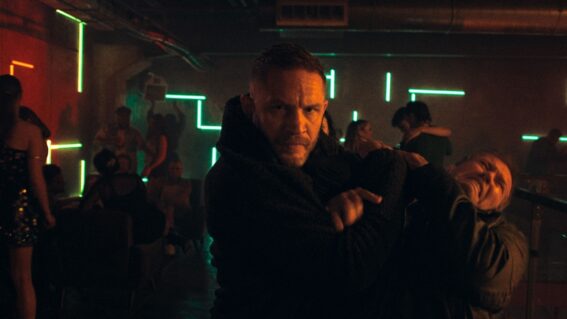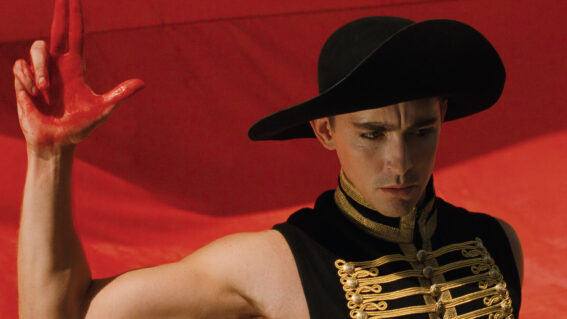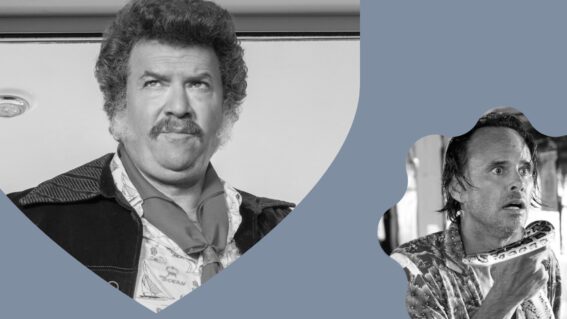Carrie retrospective: an intoxicating, still-terrifying masterpiece

After Carrie arrived on the scene, horror cinema was never quite the same. Luke Buckmaster looks back on a seminal and extraordinarily atmospheric production.
Brian De Palma’s berserkly inventive 1976 horror classic remains one of the most utterly intoxicating films ever made about bullying and the terror of adolescence. “Intoxicating” can infer something nice and lightheaded, like the feeling one gets after quaffing a few champagnes. In Carrie it’s an induced nightmare, distorting and pummelling the senses like a bad acid trip. Or like a magic potion forced down your gullet by a cackling witch. Wearing its giallo influences on its sleeve, the film (adapting Stephen King’s novel of the same name) builds towards a long and legendary prom-set scene, written with fire and bathed in fluid, explosive in every sense of the word.
Carrie burned itself onto the zeitgeist and has inspired countless other films; recently I was reminded of it during a sensationally macabre scene, set during a live TV broadcast, from Coralie Fargeat’s wild body horror The Substance. De Palma’s masterpiece gives the impression of being totally unhinged, but in fact it’s intensely focused on the terrorized state of mind of the titular protagonist, unforgettably played by Sissy Spacek, who was 25 at the time of filming but convincing as a teenager. She has extraordinary presence, with a timeless face, her soft features stretched by the devil.
The opening scene is modest compared to the Grand Guignol spectacle that awaits, but still has a terrible pinch, establishing De Palma’s penchant for visual flourishes deployed with full tilt psychological force. The camera captures an aerial view of a school netball court, floating downwards towards Carrie while a game’s in play, the protagonist looking very nervous and uncomfortable. A player on the opposing team says “hit it to Carrie, she’ll blow it.” And indeed she blows it. The ball sails past and game concludes; a team mate tells her to “eat shit.”
The next scene stings worse. The frame bobs in slow-mo through a steam-bathed gym locker room, again finding Carrie, who’s showering by herself. De Palma cuts to close-ups of her legs as she washes and soaps her body. Just as you wonder why the frame is lingering, and if this might be a textbook instance of the male gaze, it’s revealed that Carrie is experiencing her first period. She’s scared and screams for help; instead she gets attacked by her peers, who pelt her with towels and tampons. At this point there’s nothing remotely supernatural. But boy do you feel the horror—that terror of adolescence.

Carrie’s telekinetic powers develop as the runtime progresses, grounded in the film’s themes, and introduced as uncontrollable expressions of pain and anguish. The first example we see occurs when the school principal repeatedly gets her name wrong; an ashtray flies into the air and smashes. All she wants is to be seen and heard. These elements are creative expressions of the puberty experience—a journey that inevitably involves learning what we can and cannot control about our bodies, and comprehending seismic change within ourselves—some things liberating, a lot of it scary. Carrie is tormented in a different way at home, abused by her hysterically evangelist mother.
De Palma’s direction really throws everything at you, from colour saturation to spinning camerawork, off-kilter compositions, POV shots, weird close-ups and piercingly loud and dominant music. The film never stops being visually interesting. When it arrives at the iconic shot of a dread-filled Carrie dunked in blood, the prom crowd guffawing while her mother’s words echo on the soundtrack—“they’re all going to laugh at you, they’re all going to laugh at you”—cripes, it’s like watching somebody’s worst fears materialised. We’ve been transported into her Room 101, the personalised torture chamber from 1984.
This incredibly transfixing moment then goes to the next level, and the next, and the next. The party, the hellbroth, the horror is only beginning. You don’t just watch Carrie: you feel it, and it hurts. But its sheer style and bravado means this is not one of those films you sit through and think “never again.” Well, maybe initially. Every few years I return to it, reopening the crypt, unleashing the beast.




















